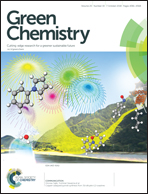Searching for a high efficiency and environmental benign reagent to leach ion-adsorption rare earths based on the zeta potential of clay particles
Abstract
To overcome the serious water pollution and landslides that occur in response to in situ ion-adsorption rare earths (IAREs) leaching, it is essential to identify highly efficient and environmentally benign leaching reagents. Therefore, the leaching efficiency (LE) of IAREs by different inorganic electrolytes at different concentrations was compared, and the landslides and ion releasing performance of tailings driven by water rinsing were evaluated based on the zeta potential of clay particles (CPs). It was found that the LE increased as the concentration increased for all electrolytes. A linear relationship existed between the LE of IAREs and the zeta potential of CPs for every electrolyte, but the slope values of the linear relationships differed among the electrolytes. Moreover, the LE of IAREs by aluminum sulfate solution was the highest and the slope of the linear relationship was positive. However, the zeta potential of CPs and the slope of the linear relationship for electrolytes of bivalent metal ions became negative. According to the double electric layer model, the negative zeta potential is a result of cation migration from the Stern layer to the diffusion layer, meaning that the residual electrolytes in tailings can be washed out by rain and produce a large amount of wastewater. Additionally, the high zeta potential can increase the repulsive force between particles, leading to landslides. Therefore, aluminum sulfate as a leaching agent of IAREs not only has a high LE but also can reduce the amount of wastewater and the risk of landslides.



 Please wait while we load your content...
Please wait while we load your content...